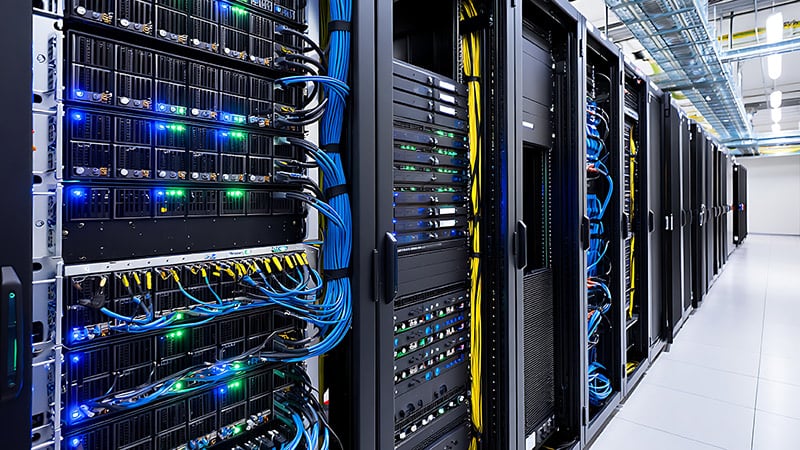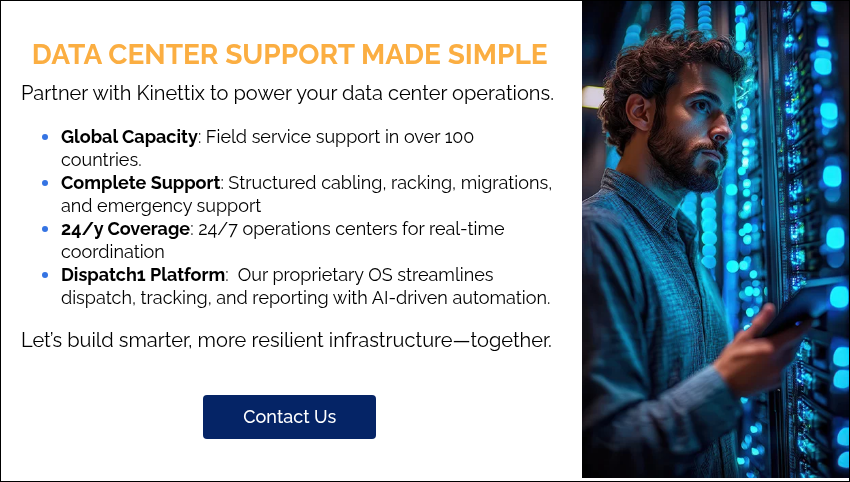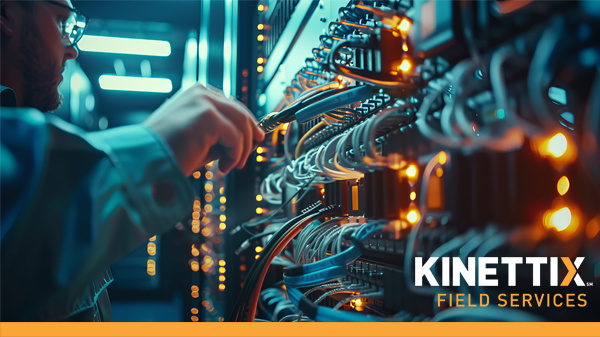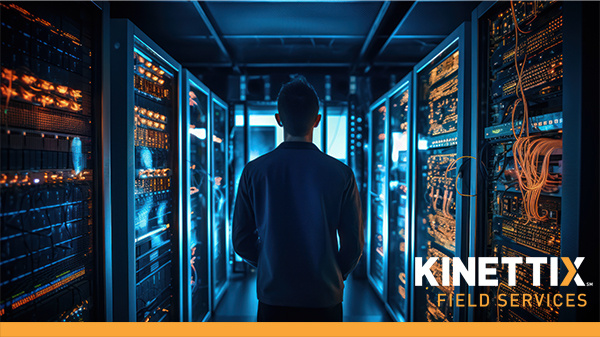Data centers play an integral role in supporting the infrastructure that drives businesses forward.
- Their role has become even greater with the advent of mass-consumed AI and the tremendous storage requirements it brings.
- With this increase in demand comes pressure on data center leadership to continually maintain and upgrade their hardware and systems.
- From storing massive amounts of information to ensuring seamless access and processing, effective data center management is the backbone of reliable operations.
However, ensuring optimal performance and efficiency in data centers is no simple feat. Companies need to adopt best practices to optimize infrastructure solutions while keeping costs manageable, boosting scalability, and guaranteeing uptime.

Selecting the right strategies can mean the difference between merely existing in today’s competitive environment and thriving.
Regardless of industry, businesses face challenges like rising operational costs, growing environmental concerns, and the constant demand for higher data processing capabilities. A strategic approach to data center infrastructure can transform potential pain points into opportunities for innovation.
7 Pain Points of Data Center Infrastructure (And Why Each Matters)

Like every endeavour, managing data center infrastructure comes with its unique challenges and pain points. Without addressing these pain points, organizations risk costly downtime, inefficiency, and bottlenecks in scaling operations. Here are seven potential challenges for which data center operators will need to account..
1. Capacity Constraints
Data centers constantly face the challenge of insufficient storage and processing capacity. The advent of AI and its immense computing and storage needs has made capacity the number one issue for data centers around the world. Replacing outdated systems and switching to future-focused solutions—such as modular designs and advanced analytics for predictive scaling—can empower enterprises to stay ahead of demand.
2. Energy Inefficiency
Lawrence Berkeley National Laboratory reported in a 2025 Congressional report that U.S. data center annual energy use in 2023 was approximately 176 terawatt-hours, which accounted for 4.4% of the electricity consumption in the United States. With such a high usage of energy, any inefficiencies can cause operating costs to quickly spiral out of control. Data centers can maximize energy efficiency through infrastructure optimization, such as aisle separation and cable management to ensure these cables don’t interfere with rack cooling. Sustainable technologies, like advanced cooling techniques and energy monitoring systems, are now pivotal in combating these inefficiencies while promoting greener practices.
3. Cooling Challenges
Traditional cooling methods often fail to meet the demands of modern high-performance servers. With increasing computational density, innovative approaches like liquid cooling systems are becoming indispensable to prevent overheating and performance lapses while reducing environmental impact.
4. Security Vulnerabilities
Data centers are prime targets for cybercriminals and physical threats. Security starts with physical control of who enters and exits the premises. Use of CCTV, biometric devices, and motion detectors are a must for modern data centers. To prevent cybertheft, data encryption, network segmentation, and continuous monitoring are essential tools.
5. Aging Infrastructure
If your data center is operating with older equipment or outdated architectures, you will have a struggle accommodating new technologies. Retrofits and upgrades not only prolong facility lifespans but also allow data centers to integrate cutting-edge systems without replacing entire builds, saving costs.
6. Regulatory Compliance
Failure to adhere to legal and industry regulations can result in hefty fines and operational shutdowns. It’s crucial for organizations to stay ahead of evolving regulatory requirements by integrating compliance mechanisms within their infrastructure planning.
7. Resource Allocation
Poor allocation of both human and technological resources can lead to wasted capacity, downtime, and inflated costs. Intelligent resource management tools can automate workflows, optimize task assignment, and ensure every operational asset is fully utilized.
Reaching to the Future: 5 Trends Shaping Modern Data Center Operations

Innovations in data center management are rapidly transforming how businesses approach their IT infrastructure. Here are five emerging trends that promise to reshape operations for the better:
- Power Capacity Challenges & Sustainable Solution
The massive energy load required by data centers is not in doubt. As the demand for these centers surges, the industry is searching for renewable systems to power their facilities. Microsoft has contracted with the Three Mile Island nuclear power plant to be the exclusive recipient of their electrical output for the next 20 years. Look for similar developments in the future. Technologies like solar energy integration and battery systems for power backup are also complementing traditional capacity upgrades to meet both operational efficiency and green mandates.
- Liquid Cooling: From Option to Necessity
Liquid cooling, once a niche consideration, is evolving as a mainstream necessity for high-powered equipment. There are significant advantages to this cooling option. It delivers enhanced energy efficiency, a reduced footprint, and superior thermal management. As data centers continue to grow and face a surge in demand, an increasing number of facilities will use this technology.
- Processor & Network Evolution
The rapid advancement of processors and network technology is redefining the performance capabilities of data centers. Tools like 5G networks and AI-powered chips optimize efficiency while enabling unprecedented processing speeds.
- Retrofitting: New Data Centers Can't Be Built Fast Enough
Demand for data centers is growing too fast for new construction to keep pace. Retrofitting existing facilities with modular components and scaling methods is becoming the preferred alternative to keep operations robust and agile.
- Economic Pressures and Opportunities
While economic challenges like inflation and labor costs pose hurdles, they also create opportunities for automation and cost-efficient solutions. Data centers are increasingly leaning toward technologies that reduce manual intervention and amortize long-term expenses while boosting productivity.
Does Your Data Center Follow all 5 of These Best Practices?

A modern data center is only as reliable as the strategies behind it. By following these five strategies, organizations can reduce risk, lower costs, and keep mission-critical operations running without interruption.
- Implementing redundancy and failover systems
According to the Uptime Institute, most data centers have experienced an outage in the last three years. In two-thirds of those outages, the total cost was over $100,000. Minimizing this costly downtime begins with robust failover mechanisms, but also includes regular equipment inspection and maintenance, and environmental monitoring. - Optimizing energy efficiency
Minimizing your data center’s energy usage has numerous benefits. It is central to cutting costs and also meets sustainability goals. - Ensuring physical and cyber security
Simply put, security is the linchpin of data centers. Whether you are a user or a provider of data center services, a data breach can lead to loss of customer trust and a resulting loss of business. A single vulnerability—whether it's a compromised server room or an unpatched software system—can lead to operational downtime, financial loss, and reputational damage. - Regular maintenance and upgrades
The world of technology changes at lightning speed. It is critical for data centers to ensure that they have the most recent upgrades to both hardware and software. Outdated components are more energy inefficient and make systems more prone to failure and more vulnerable to cyberattacks. Routine maintenance helps identify and resolve issues before they escalate, while timely upgrades enable the adoption of newer, more efficient technologies that support scalability and compliance. - Compliance with standards and regulations:
Compliance helps safeguard sensitive data by enforcing robust security protocols such as encryption, access controls, and continuous monitoring. These measures reduce the risk of breaches and unauthorized access, which could otherwise lead to significant financial and reputational damage.
2 Industry Examples: How These Successful Companies Incorporated Ideal Data Center Infrastructure Solutions
Kinettix has demonstrated its expertise in data center infrastructure time and again. Check out two examples of the diverse range of services and business outcomes we can offer.
1. Case Study - Sensor Installation in Telecom Data Center
Client Needs
A leading telecommunications company required a comprehensive environmental monitoring solution across two of its lab rooms within a high-security data center. The project involved the installation of 250 appliances, 150 sensor pods, and over 160 wired temperature and humidity sensors. Additionally, the client needed Ethernet cabling from each appliance to both the nearest network switch and the associated sensor pods. While the client supplied the cabling materials, they relied on Kinettix to handle the physical installation, cable routing, termination, and testing to ensure full operational readiness.
Kinettix Strategy
- To meet the client’s requirements, Kinettix developed a detailed deployment plan that prioritized precision, efficiency, and minimal disruption to ongoing operations.
- Leveraging its global network of certified field technicians and its Dispatch1 platform, Kinettix coordinated a team with specialized experience in data center hardware integration and structured cabling.
- The strategy included a pre-deployment review of floor plans, a room-by-room installation sequence, and a quality assurance checklist to validate all connections and sensor functionality.
- Kinettix also ensured that all technicians were briefed on the client’s security protocols and compliance standards.
Execution
- The installation was executed across two lab rooms—DC3 and DC4. In DC4, technicians installed 8 appliances, 12 sensor pods, and 100 wired sensors. In DC3, they deployed 7 appliances, 10 pods, and 68 sensors.
- Ethernet cables were cut, run, and terminated from each appliance to both the sensor pods and the nearest network switch, ensuring seamless connectivity.
- The team adhered to structured cabling best practices, labeling and testing each connection to confirm signal integrity and compliance with the client’s infrastructure standards.
- The work was completed within the scheduled timeframe, with real-time updates and documentation provided through Dispatch1.
Outcomes
- The project was completed on time and without disruption to the client’s ongoing operations.
- The installed system now provides real-time environmental monitoring, enhancing the data center’s resilience and operational visibility.
- The client reported high satisfaction with the professionalism, communication, and technical execution of the Kinettix team.
- This successful deployment reinforced the client’s confidence in Kinettix as a reliable partner for future infrastructure projects, particularly those requiring precision, scalability, and adherence to strict compliance standards.
2. Case Study - Data Center Relocation for National Media Organization
Client Need
A large national media organization required the relocation of its critical data center infrastructure to a new facility in Dallas, TX. The organization emphasized the need for minimal business disruption, strict asset protection, and continuous service availability throughout the transition. Additionally, all hardware assets, some of which were highly sensitive and valuable, had to be securely handled and transported under a comprehensive insurance policy.
Kinettix Strategy
Kinettix developed a tailored migration strategy that balanced operational continuity with asset risk management. Key elements included:
- Comprehensive site audit and walkthroughs to map dependencies and mitigate risk.
- Collaboration with vetted logistics and technical vendors to ensure end-to-end coverage.
- Implementation of a $1 million insurance policy to protect client assets during transit.
- Designation of an experienced lead technician to oversee every phase, ensuring accountability and seamless communication.
Execution
- Site Audit & Walkthrough: A thorough onsite inspection catalogued all hardware and infrastructure, identifying potential risks and critical dependencies.
- Packing & Logistics: Using industry best practices, each asset was securely packed and labeled. All items were insured to safeguard against potential loss or damage.
- Deinstallation & Transport: Technical experts carefully managed deinstallation, secure transport, and documentation, in partnership with trusted vendors.
- Reinstallation & Support: At the new data center, equipment was reinstalled and tested to confirm full operational status. Technicians provided immediate post-migration support and troubleshooting to ensure a smooth transition.
Outcomes
- The data center migration was executed on schedule and without any major incidents or downtime.
- All assets were tracked, insured, and transported safely, with no loss or damage during transit.
- The client maintained uninterrupted business operations throughout the project.
- The project’s transparent billing and milestone-based oversight reinforced the client’s satisfaction and confidence in Kinettix’s capabilities.
- Strong risk mitigation and post-migration support contributed to a long-term, trust-based partnership.
Discover Data Center Infrastructure Solutions That Turbocharge Your Business

Kinettix delivers a powerful combination of global reach, technical expertise, and flexible service models to support data centers of all sizes and complexities.
With operations in over 90 countries and 24/7 support from service centers in Cincinnati and Cebu, Kinettix the deployment of certified technicians for infrastructure migrations, racking and stacking, structured cabling, and emergency break/fix services.
Whether clients need fully managed outcomes or prefer to coordinate directly with technicians throughout staff augmentation services, we provide scalable, vendor-agnostic solutions that reduce margin stack and increase operational agility.
Data centers have a complex variety of needs for IT field service. Kinettix takes the unique needs of each client and tailors a solution that will ensure data security, minimize downtime, and provide excellent results. We excel in strategic coordination and specialized deployments.
Our ability to navigate complex logistics, vet skilled technicians, and manage compliance requirements makes us a trusted partner for high-stakes projects like data center relocations and multi-site rollouts. With a focus on minimizing downtime and maximizing efficiency, Kinettix empowers data centers to stay resilient, responsive, and ready for growth.
Contact us here or reach out by phone (888)397-0086 to discover what Kinettix can do for your data center infrastructure.






